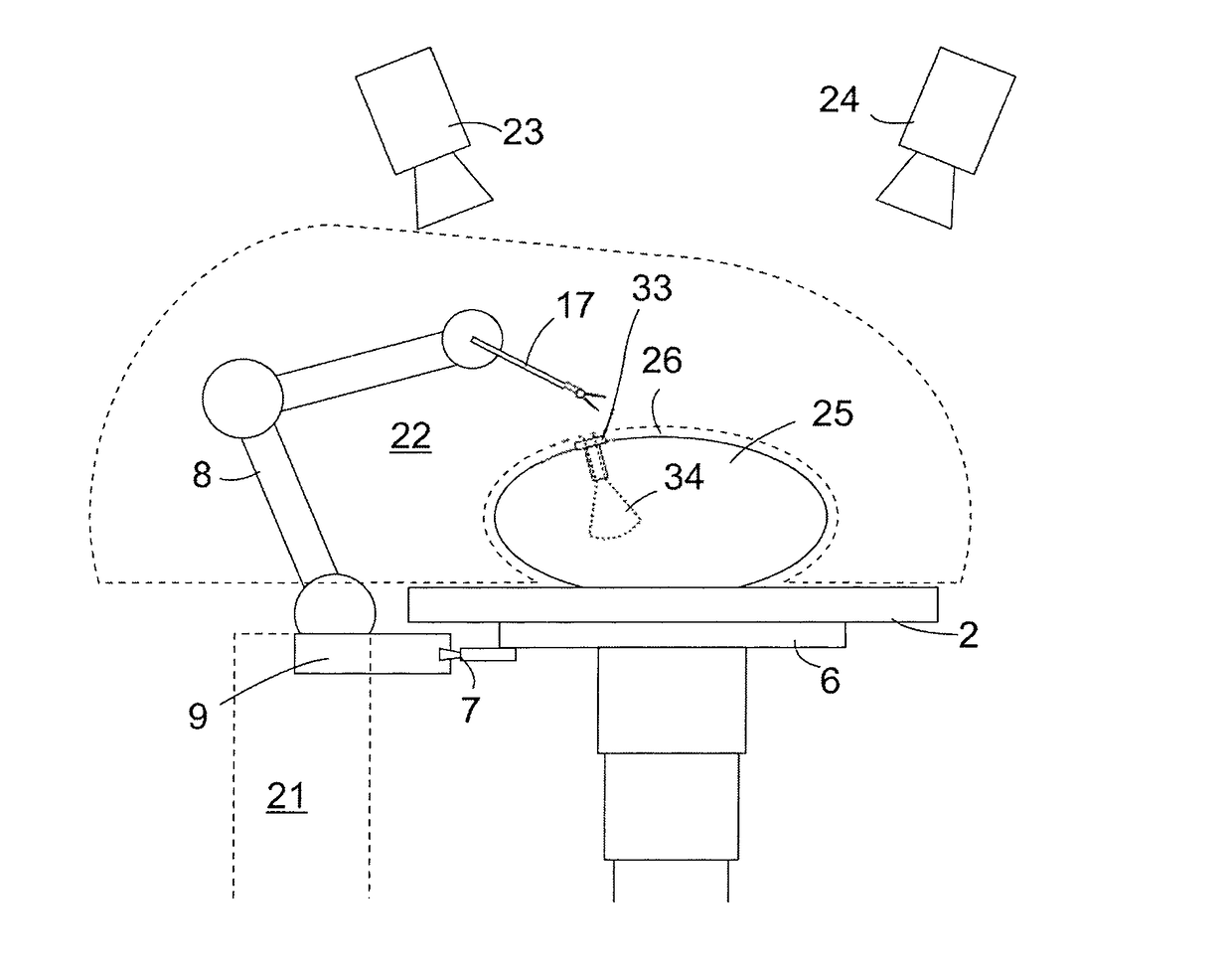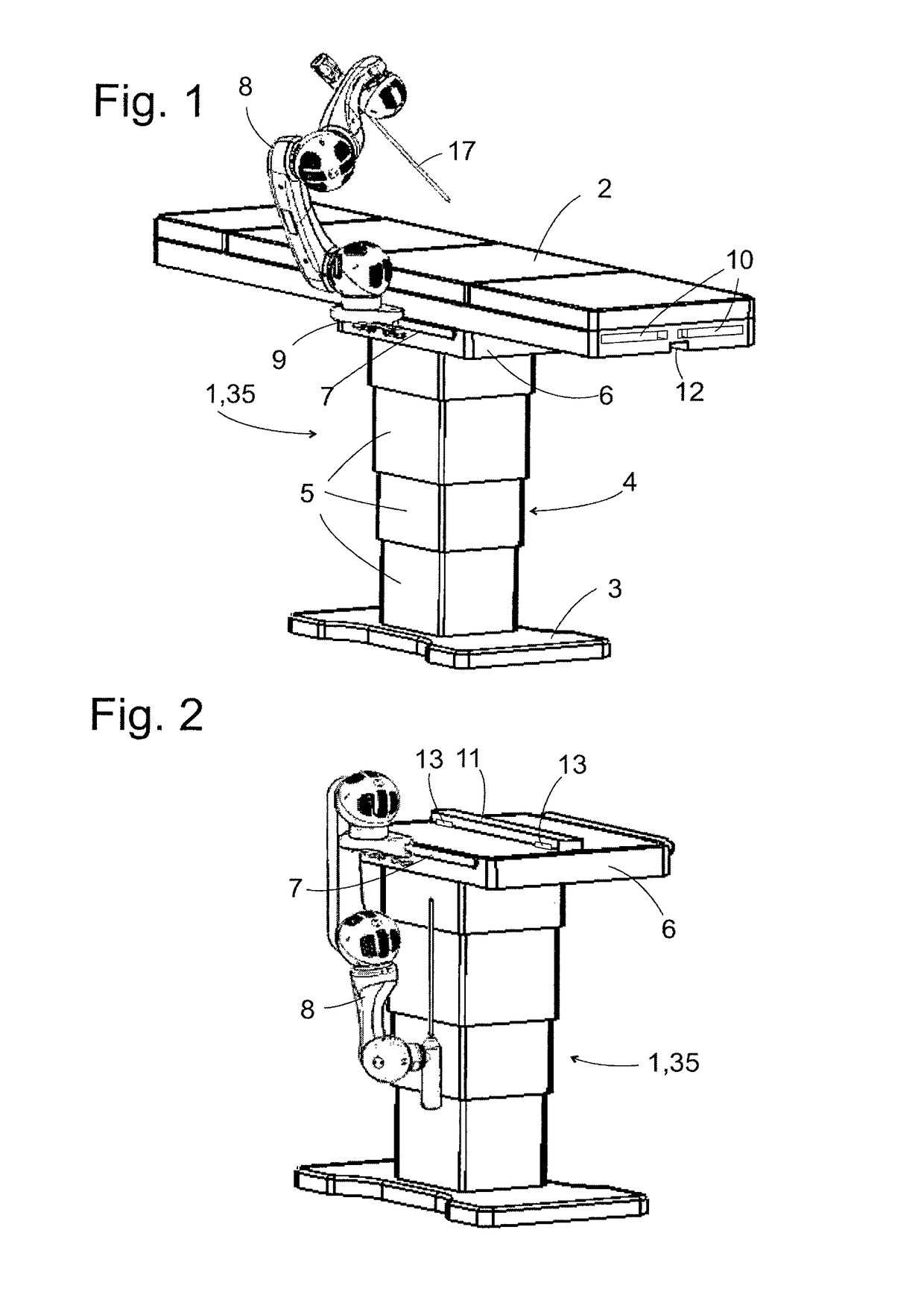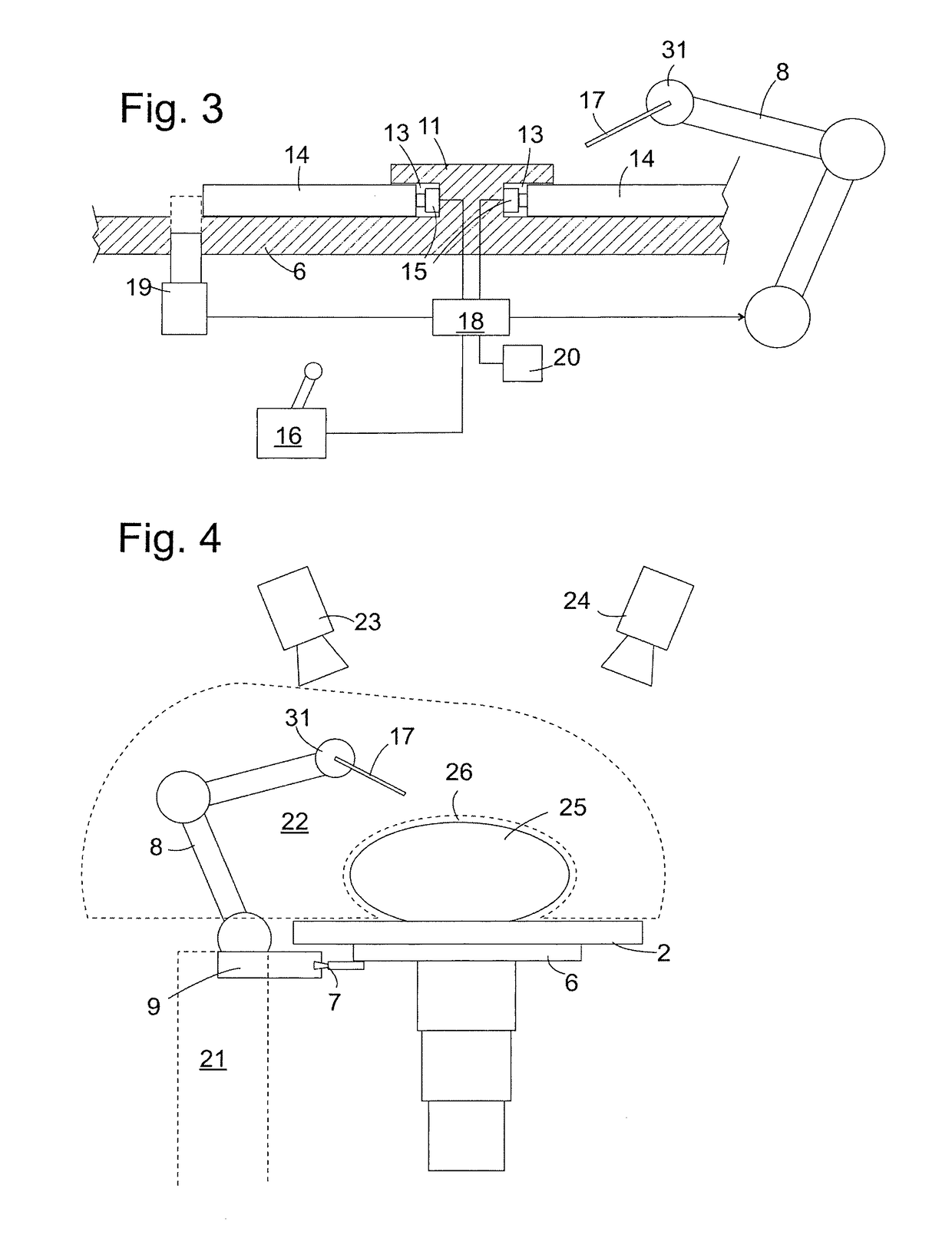Surgical robot system
a robot and robot technology, applied in the field of surgical robot systems, can solve the problems of patient body, inability to access information on the wider operating environment, movement of auxiliary theatre staff, etc., and require considerable for
- Summary
- Abstract
- Description
- Claims
- Application Information
AI Technical Summary
Benefits of technology
Problems solved by technology
Method used
Image
Examples
first embodiment
[0033]FIG. 1 shows the robot system according to the invention in a perspective view. A base element 1, in this case designed as a pedestal base 35, and a patient support 2 mounted detachably on the base 35 form an operating table. In this case the base 35 comprises a base plate 3 mounted firmly on, for example bolted to, the floor, and a column 4 which in this case is composed of a plurality of telescopically interlocking, height-adjustable segments 5. The upper end of the base 35 is formed by a support plate 6 which supports the patient support 2 and which carries on its longitudinal edge a rail 7, to which a robotic arm 8 is detachably attached. In this case a foot section 9 of the robotic arm 8 comprises two clamping jaws which can be moved relative to one another and which can be clamped onto the rail 7 with the aid of quick-release levers. The quick-release levers make it possible for the robotic arm 8 to be attached to and removed from the base 35 quickly and placed in differ...
second embodiment
[0042] the execution instance 16 also comprises an input instrument which can be moved in several degrees of freedom and a processor; however, the functional principle of the processor is different: when the input instrument is in an idle position, the processor does not generate any control commands; if the input instrument is deflected from the idle position, it generates control commands in order to move the robotic arm 8 in a direction specified through the direction of the deflection with a speed proportionate to the extent of the deflection.
third embodiment
[0043] the execution instance 16 comprises a microphone and a computer-supported speech recognition system which allows it to respond to spoken instructions by a surgeon and so gives the latter the possibility of controlling the robotic arm 4 while simultaneously using his hands to work on the patient himself.
[0044]In particular if—as in the case of the first and second embodiment—it can be manually controlled, the execution instance 16 can be positioned physically separate from the other parts of the surgical robot systems. This makes it possible for the surgeon to carry out the operation at a distance from the patient. Even a surgeon who is not physically present in the operating theatre is thus given the possibility of working on the patient with the aid of the robotic arm 8. A camera which supplies this surgeon with the necessary feedback regarding the current position of an instrument 17 held by the robotic arm 8 can be firmly mounted in the operating theatre, for example on it...
PUM
 Login to View More
Login to View More Abstract
Description
Claims
Application Information
 Login to View More
Login to View More - R&D
- Intellectual Property
- Life Sciences
- Materials
- Tech Scout
- Unparalleled Data Quality
- Higher Quality Content
- 60% Fewer Hallucinations
Browse by: Latest US Patents, China's latest patents, Technical Efficacy Thesaurus, Application Domain, Technology Topic, Popular Technical Reports.
© 2025 PatSnap. All rights reserved.Legal|Privacy policy|Modern Slavery Act Transparency Statement|Sitemap|About US| Contact US: help@patsnap.com



